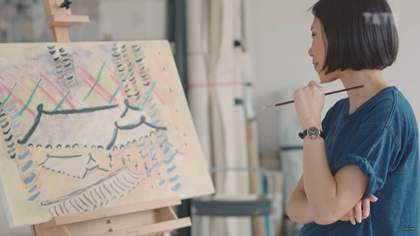A display of artworks which capture the harmony of music, colour and spirituality
The trigger work in this constellation is Wassily Kandinsky’s Cossacks 1910-1, which depicts the titular orange-helmeted cavalrymen. The scene is almost entirely stripped of recognisable elements – Kandinsky believed art did not need to represent the real world. He drew comparisons between music, colour and spirituality, which he visualised in his paintings. Commenting on their connections, the artist said: ‘Our hearing of colours is so precise ... Colour is a means of exerting a direct influence upon the soul’.
Several works in the display expand ways of thinking emerging from and related to Kandinsky’s work and abstract art more broadly. Aubrey Williams, whose painting Shostakovitch 3rd Symphony Opus 20 is on display here, described his reaction to having encountered the music of Shostakovich as ‘hearing for the first time a sort of total sound – I could feel colour’.
The display also includes a trio of artists who reference leading modernist figures known to Kandinsky. Goshka Macuga’s Drawing no.4 ‘Path of Movement of a Point’ after K. Malevich (1922) was inspired by sketches of Kazimir Malevich. The reference to De Stijl artist Piet Mondrian in Helio Oiticica’s B17 Glass Bólide 05 ‘Homage to Mondrian’, meanwhile, emphasises the importance of colour to stimulate visual and tactile sensations.
Tate Liverpool + RIBA North

